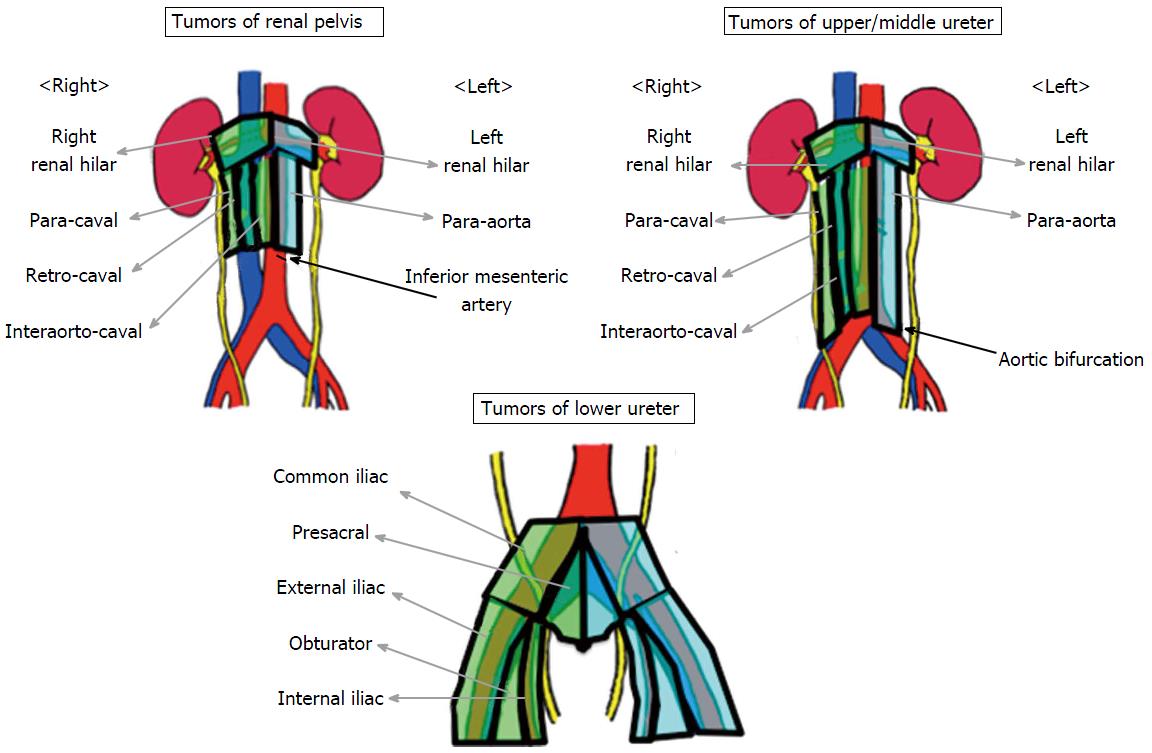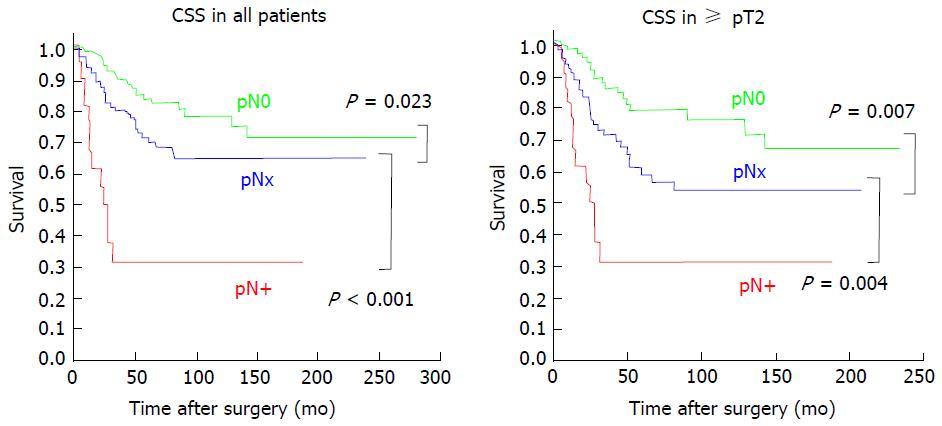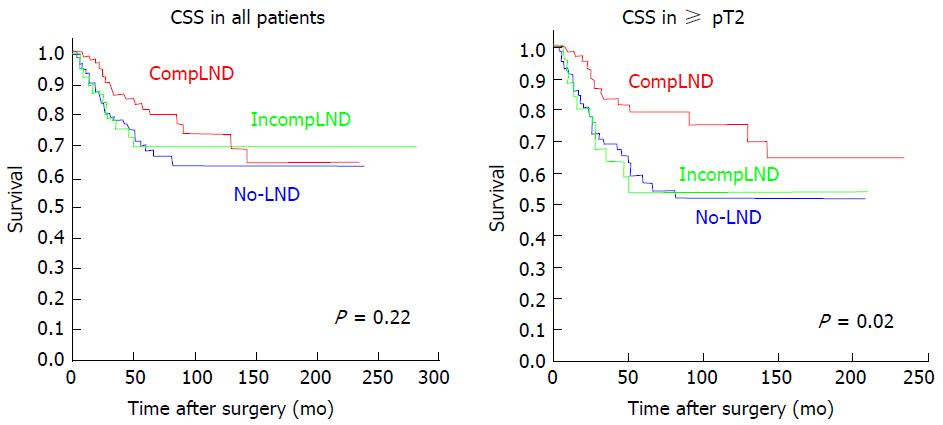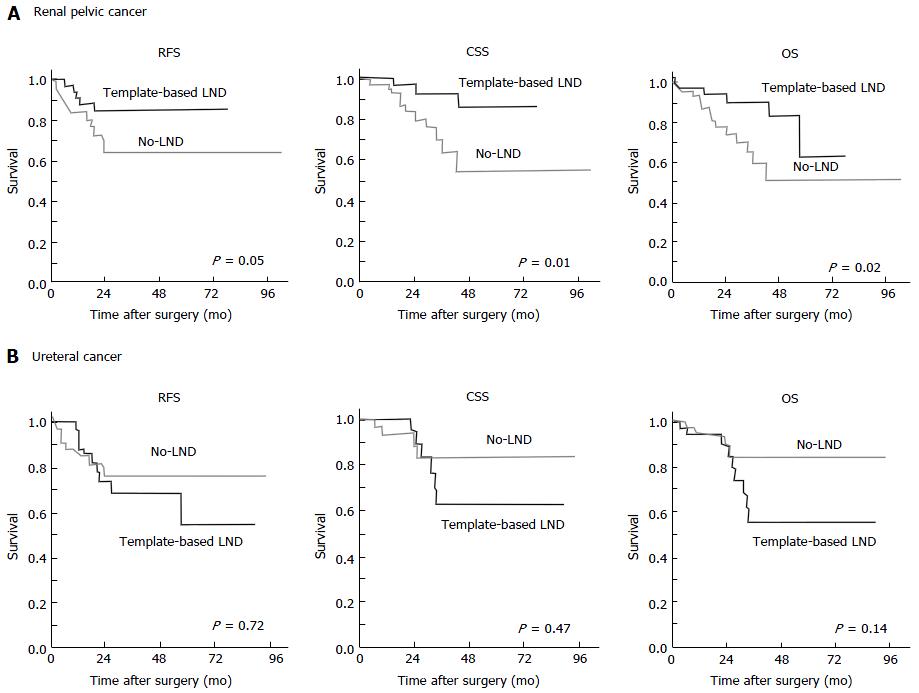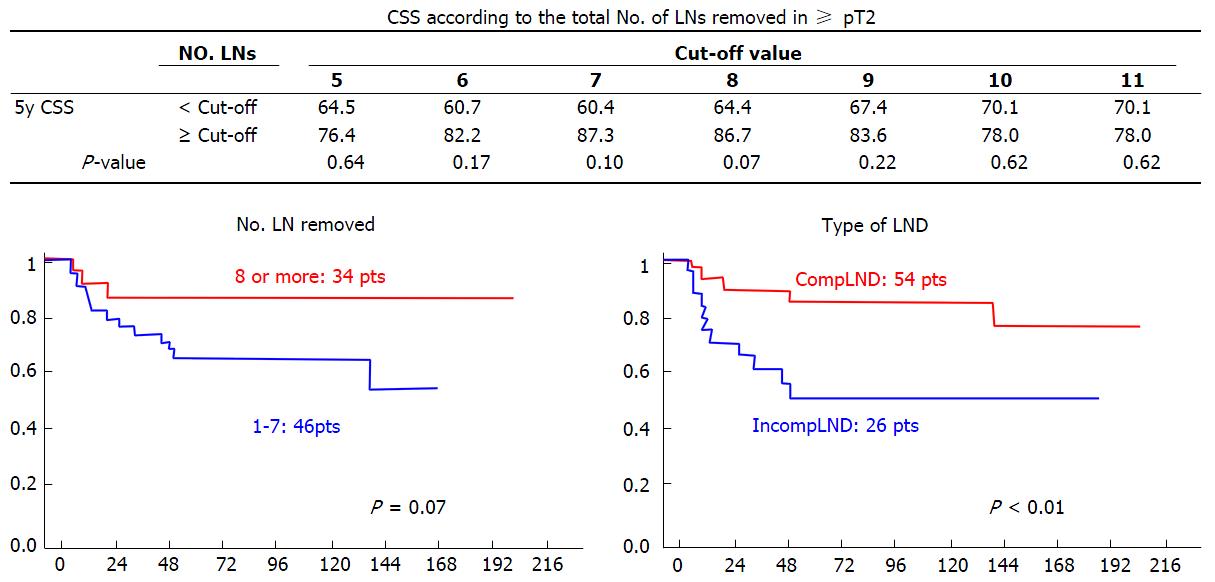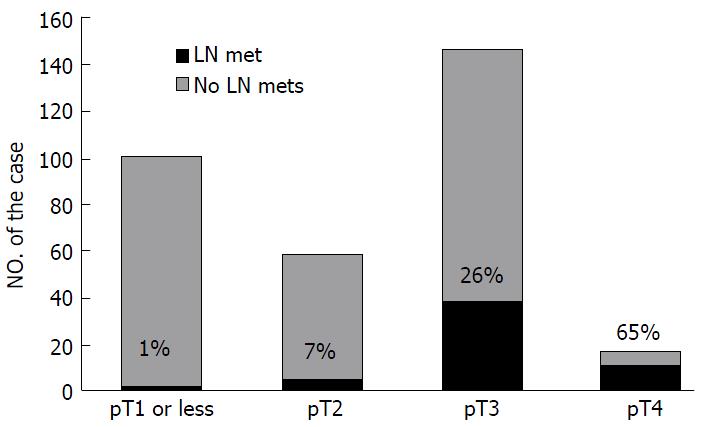Copyright
©The Author(s) 2015.
World J Clin Oncol. Dec 10, 2015; 6(6): 237-251
Published online Dec 10, 2015. doi: 10.5306/wjco.v6.i6.237
Published online Dec 10, 2015. doi: 10.5306/wjco.v6.i6.237
Figure 1 The extent of lymphadenectomy currently proposed for urothelial carcinoma of the upper urinary tract.
Figure 2 Benefit of staging lymphadenectomy by stratification of patients according to lymph node status in our institute.
CSS: Cancer-specific survival.
Figure 3 Therapeutic benefit of lymphadenectomy according to the extent of lymphadenectomy in our institute.
LND: Lymphadenectomy; CSS: Cancer-specific survival.
Figure 4 Patient survival in a non-randomized prospective study according to the location of the primary tumor.
LND: Lymphadenectomy; CSS: Cancer-specific survival; RFS: Recurrence-free survival; OS: Overall survival.
Figure 5 Recurrence pattern in regional nodes according to the extent of lymphadenectomy in patients with renal pelvic cancer.
LND: Lymphadenectomy; LN: Lymph node.
Figure 6 The influence of the number of lymph nodes removed on cancer-specific survival.
LND: Lymphadenectomy; CSS: Cancer-specific survival; LNs: Lymph nodes.
Figure 7 The incidence of lymphatic metastases according to the primary tumor stage.
LN: Lymph node.
- Citation: Kondo T, Takagi T, Tanabe K. Therapeutic role of template-based lymphadenectomy in urothelial carcinoma of the upper urinary tract. World J Clin Oncol 2015; 6(6): 237-251
- URL: https://www.wjgnet.com/2218-4333/full/v6/i6/237.htm
- DOI: https://dx.doi.org/10.5306/wjco.v6.i6.237









